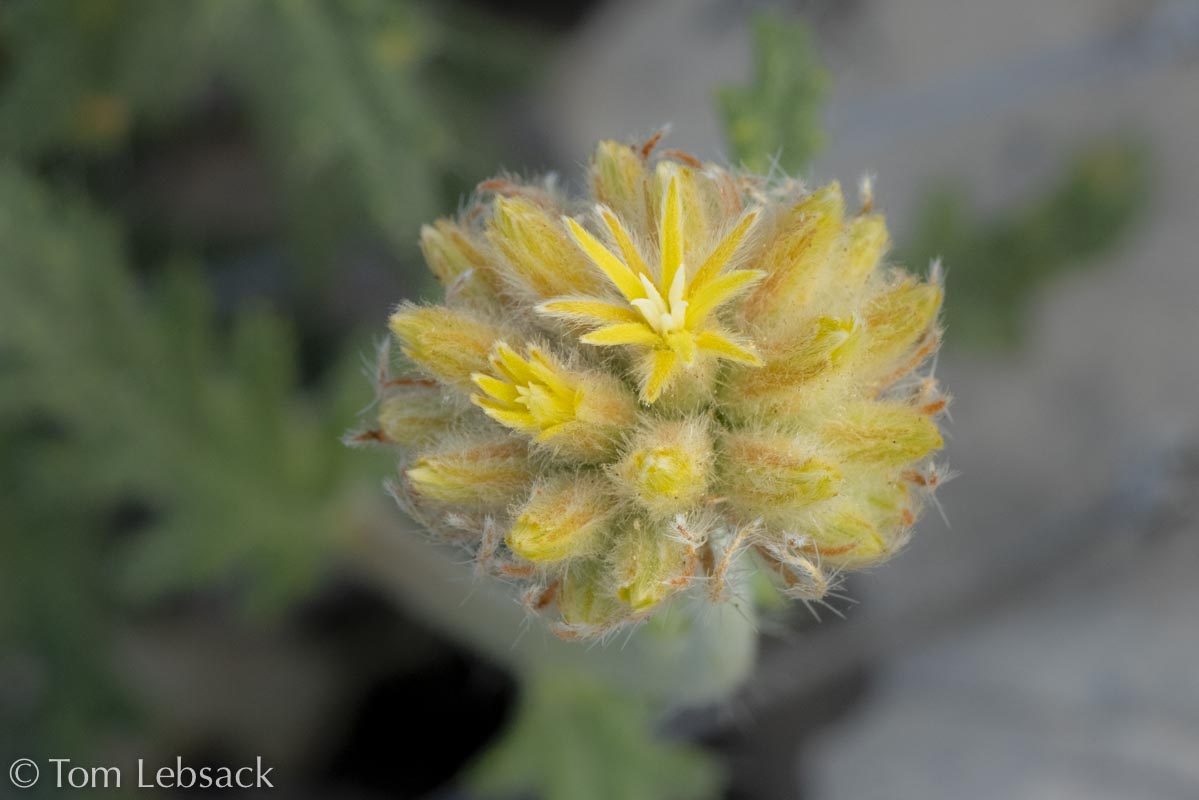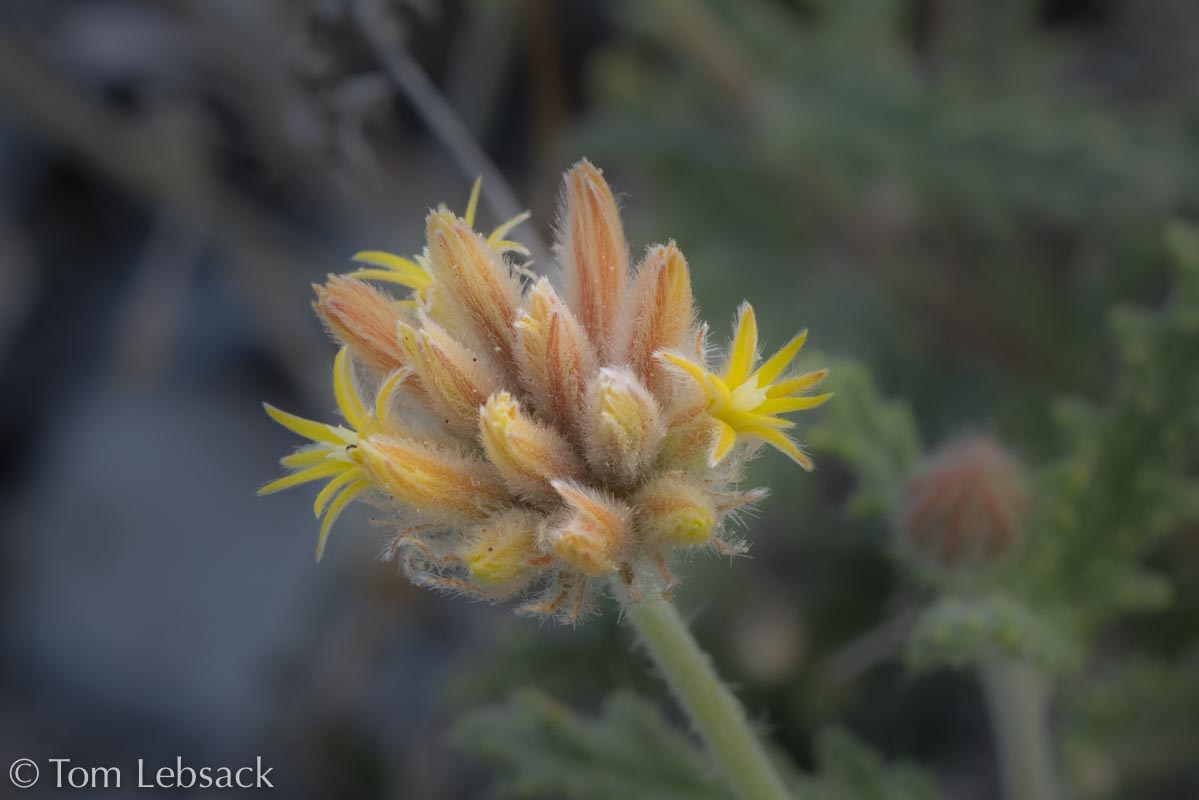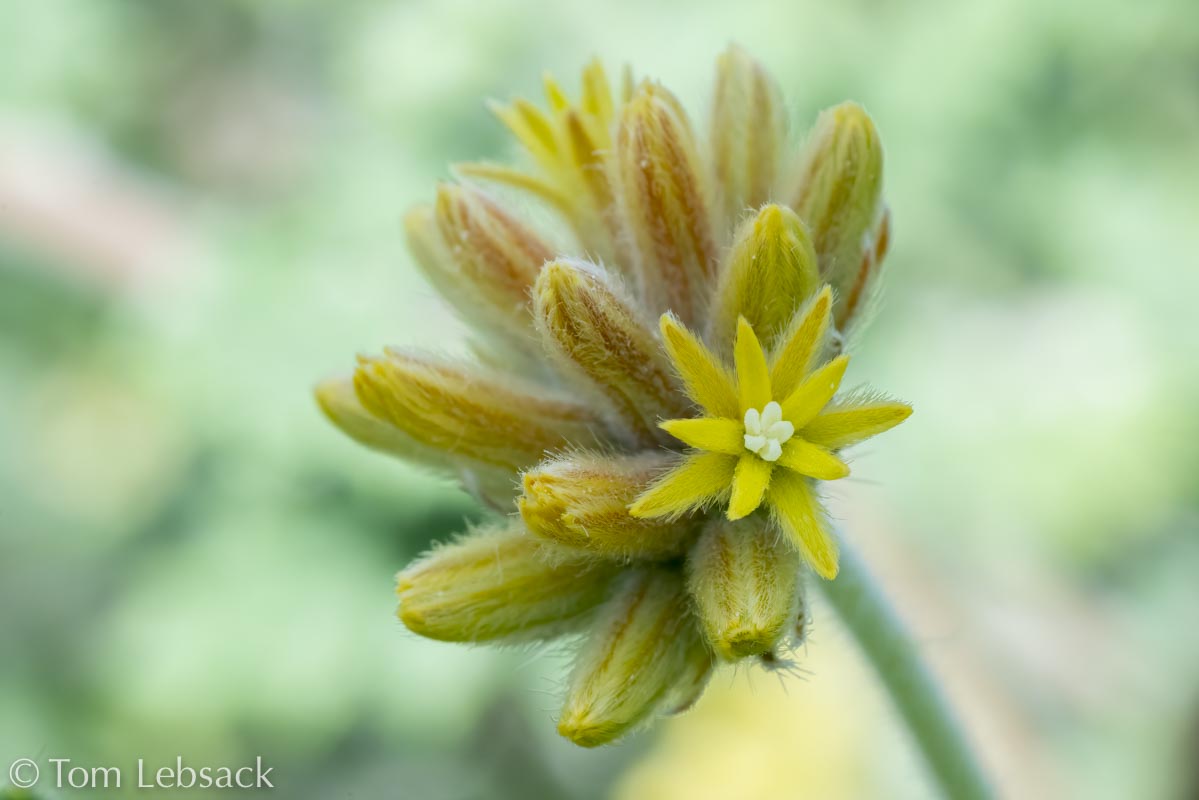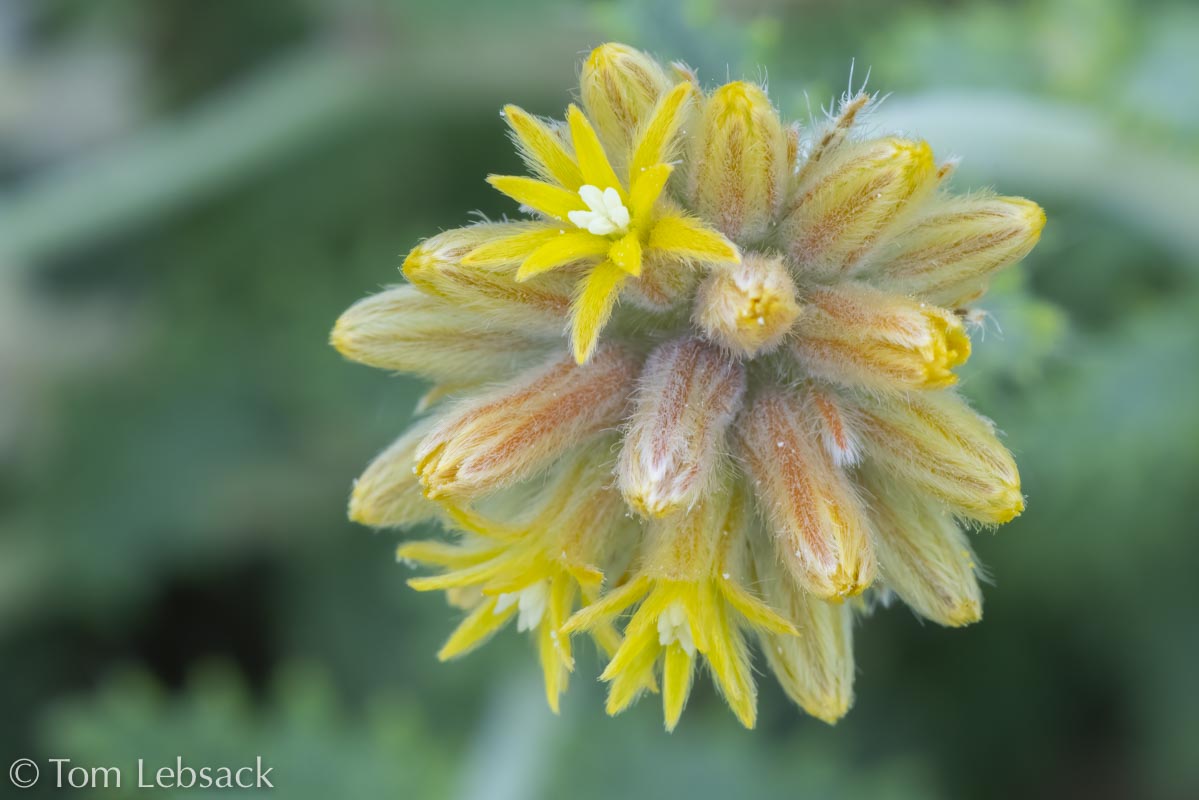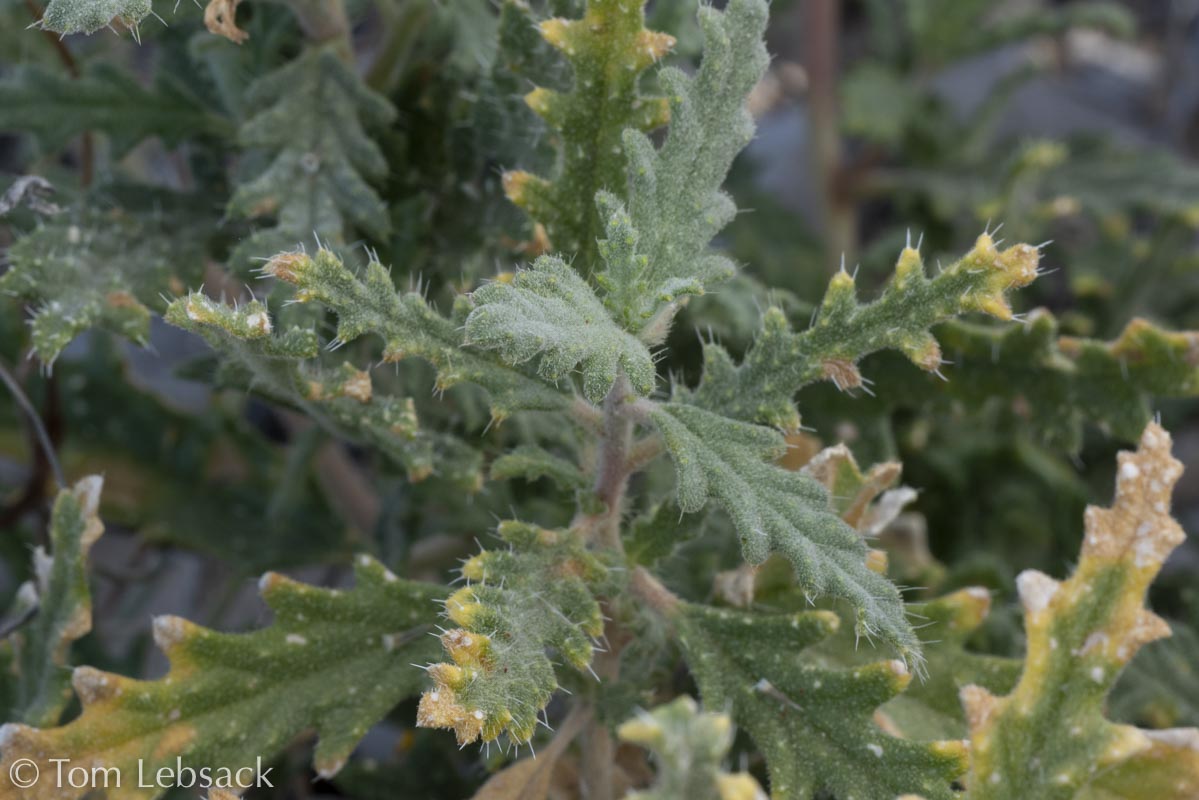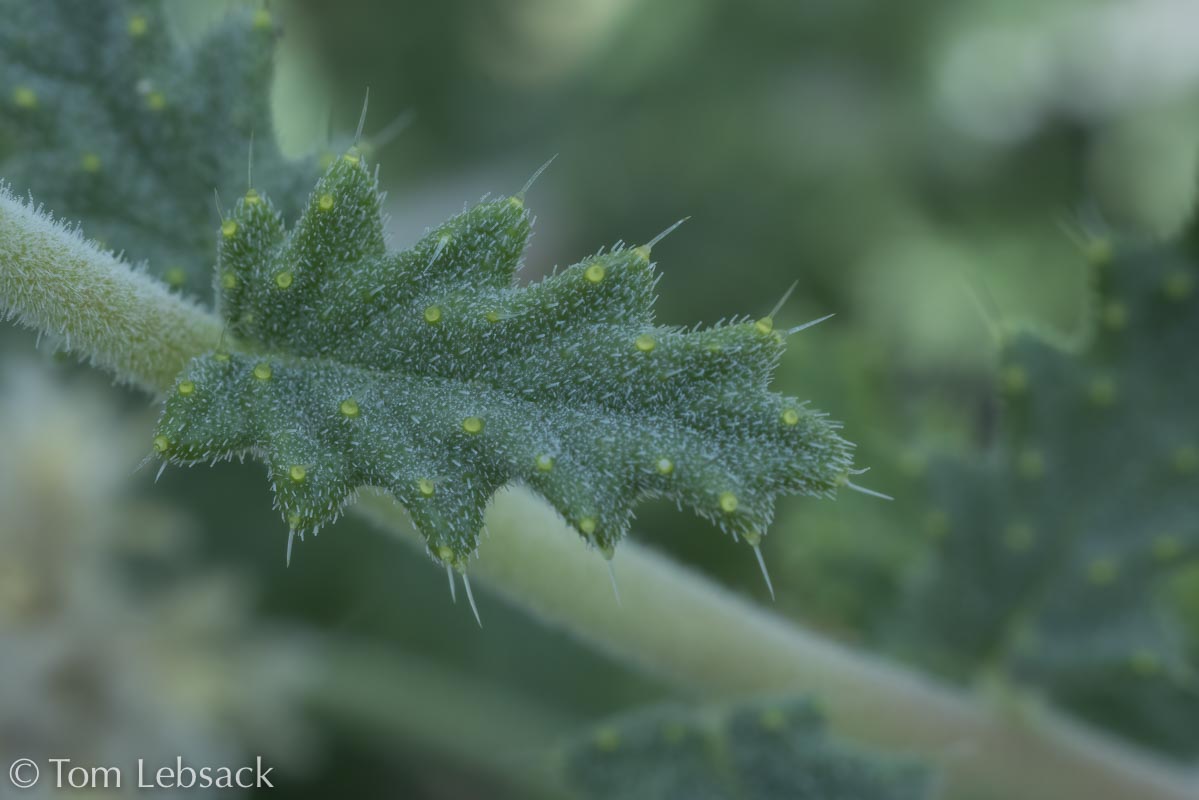Texas Wildbuds
Cevallia sinuata
(Stinging Serpent)
| Scientific Name | Cevallia sinuata | USDA PLANTS Symbol | CESI |
| Common Name | Stinging Serpent, Stinging Cevallia | ITIS Taxonomic Serial No. | 19842 |
| Family | Loasaceae (Stickleaf) | SEINet Reference |
Click Here |
| Description |
Habitat: Various soil types in open areas, washes and along roadsides; found in the Big Bend area, southeast along the Rio Grande and north sporadically as far as the Texas Panhandle. Plant: Short, woody, branched perennial subshrub up to 2 feet tall, armed with long stinging hairs. Leaves: Elliptic, 3/4 to 3 inches long; lower leaves short-petiolate, upper sessile; margins sinuate-toothed to pinnately lobed; surfaces covered with stinging hairs. Inflorescence: On peduncles 1 to 4 inches long, very congested cymes resembling balls about 1-1/2 inch across with many very small yellow blossoms and buds; flowers with 5 slender, hairy yellow petals surrounded by similar-looking sepals, 5 stamens. Blooming Period: April to October. References: "Little Big Bend" by Roy Morey, "Manual of the Vascular Plants of Texas" by Correll and Johnston and SEINet. Note: Thanks to Roy Morey for the plant identification. |
BONAP Distribution Map Map Color Key |
Texas Status: Native |
Banner photo of Castilleja indivisa and Lupinus ssp. taken along FM 1323 north of Johnson City, Blanco County
© Tom Lebsack 2025
Every attempt is made to provide accurate, up-to-date, and relevant information, but the completeness or accuracy of any information presented on this website cannot be guaranteed. I use authoritative references to insure high standards of accuracy and review and update the information frequently.
